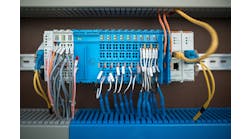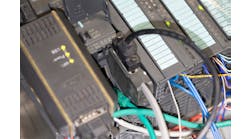Microscan recently published an educational white paper with practical guidance about one of the most influential changes to reach the factory in over 20 years – The Industrial Internet of Things (IIoT). The white paper, "Becoming the Factory of the Future: How to Prepare Now for the Industrial Internet of Things," defines the critical elements of the Internet-enabled factory and provides steps for preparing industrial manufacturing operations for the next stage of device connectivity. Intended for beginners to IIoT and industrial connectivity, the paper offers a look into the factory of the future and details five fundamental steps that manufacturers should take now to prepare for seamless integration when the Internet reaches the factory.
Factories of the future will be measured not so much by their ability to produce, but to produce with the most flexibility. Industrial manufacturers are expected to remain competitive in this new era of connectivity, but implementing an Industrial Internet of Things is still largely theoretical while Internet-enabled factory devices and systems remain in the developmental stages. What can manufacturers do now to get prepared?
There are five steps that manufacturers can take now to equip themselves for Internet-based connectivity. Establishing these practices in manufacturing operations will be critical to being ready when factory technology finally catches up with the Internet on a global scale.
1. Get Digital
Put factory data in a format the Internet understands. Use sensors, barcode readers and cameras to convert product codes and images to digital, filterable data strings.
2. Get Automated
Prepare for Internet speeds using tireless and precise factory devices that recognize and respond to critical data without manual intervention.
3. Get Connected
Connect all factory devices on a robust industrial network. Allow machines to speak directly about factory needs to enable fully-automated processes.
4. Get Real-Time, Remote Access
Send data farther and faster. Use web services to monitor current factory conditions remotely through web browsers or electronic alerts.
5. Get Internet-friendly Tools
Choose technology based on web protocols to make factory data accessible across all common devices from PCs to tablets to, eventually, the World Wide Web.
By implementing these tools as they become available, the factory of the present will keep time with the changing landscape of industry until the act of linking to the Internet is simply the next logical step.



